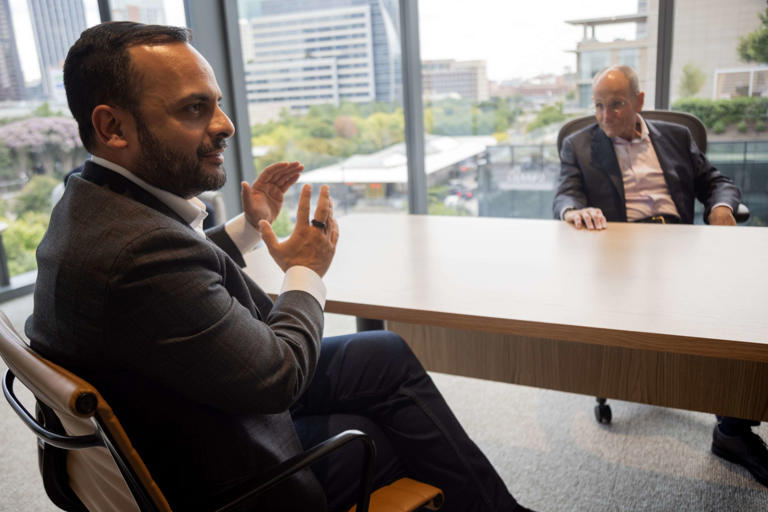Bob Sulentic, CEO and board chair of CBRE Group, Inc., is taking a distinctive and progressive approach to office work arrangements, setting a notable precedent in the corporate world. As the largest commercial real estate services and investment firm globally, CBRE manages over 7.3 billion square feet of commercial properties and serves clients in more than 100 countries. With over 130,000 employees, the company wields significant influence in the real estate sector.
Sulentic’s decision not to enforce a mandatory return-to-office policy reflects a broader trend in the corporate landscape, where flexibility and productivity are becoming key focal points. Instead of imposing rigid requirements, CBRE’s approach is centered around the idea that productivity and results should be the primary measures of success. Sulentic emphasizes that while the company encourages employees to work from the office most of the time, it does not mandate it. This philosophy aligns with a growing recognition that a one-size-fits-all approach to office work may not be effective for every employee or every organization.
The move to Dallas, which began in 2020, was part of a strategic relocation from CBRE’s previous headquarters in Los Angeles. The company’s new global headquarters is located in the Park District development at 2121 N. Pearl Street, a prominent area across from Klyde Warren Park. The 67,325-square-foot space reflects CBRE’s commitment to creating a dynamic and engaging work environment that aligns with its own expertise in commercial real estate.
Sulentic’s strategy of not mandating office attendance is part of a broader vision to build a workplace environment that fosters productivity and collaboration. The new headquarters is designed to be more than just a physical workspace; it aims to be a hub of activity and engagement. According to CBRE’s 2023-2024 Global Workplace & Occupancy Insights Report, office utilization globally dropped from a pre-pandemic average of 64% to just 35% in mid-2023. This decline underscores a shift in workplace expectations and has driven companies to rethink their office spaces.
CBRE’s approach to its new headquarters is informed by several key insights derived from its work with clients. One crucial lesson is that the most impactful amenity is the presence of other employees. The company’s design strategy emphasizes creating an environment that feels vibrant and connected, avoiding the isolation that can occur in empty or sparsely populated offices. The new office incorporates features that foster a sense of activity and engagement, including open office bays, living room-style conference rooms, and reservable workspaces.
The headquarters design, led by the architecture firm Gensler, embraces a “sanctuary” theme with neutral, timeless tones and an accessible, non-pretentious aesthetic. The office occupies lower floors of the Park District building, providing expansive floor-to-ceiling windows that offer seamless views of Klyde Warren Park’s greenery. This design choice contrasts with traditional office buildings, which often prioritize higher floors for their prestige.
Amenities at the new headquarters include the RISE Café, which reflects the company’s core values of respect, integrity, service, and excellence. The café, along with other office features, is designed to enhance employee experience and foster a sense of community. The headquarters also boasts a substantial digital display and incorporates flexible workspace options, including mobile power stations and clean desk policies that allow for a dynamic and adaptable work environment.
The emphasis on flexibility and productivity is further supported by CBRE’s focus on neurodiversity, acknowledging that different individuals have varied needs for effective work environments. This approach aligns with Sulentic’s belief that fundamental values in the workplace—such as the desire for recognition, fair treatment, and career opportunities—transcend generational differences.
CBRE’s strategic decisions extend beyond workplace management to its approach to mergers and acquisitions. Under Sulentic’s leadership, the company has completed over 100 M&A deals since 2012. Notable among these is the $1.3 billion acquisition of a majority stake in Turner & Townsend, a UK-based project management firm. These acquisitions are intended to enhance CBRE’s capabilities and align with its strategic goals.
Despite the move to a new headquarters, CBRE retains a significant stake in its previous location at 2100 McKinney Avenue. Although the company initially planned to develop a new office tower at this site, Sulentic has indicated that while the company values the location, it has no immediate plans to proceed with the development. This reflects a broader approach to investment, where patience and strategic planning are key components.
Overall, CBRE’s approach to office management and its new headquarters design highlight a commitment to creating a work environment that supports productivity, engagement, and flexibility. By focusing on these principles, the company aims to set a new standard in the commercial real estate sector and demonstrate how modern workspaces can evolve to meet the needs of today’s workforce.
